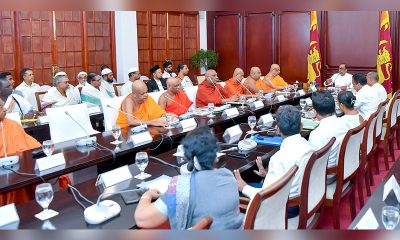Features
‘Qingdao organic fertiliser shipment is pathogen free’: How scientifically acceptable is test report?

by Prof. Devika de Costa
(Chair Professor of Plant Protection, Faculty of Agriculture, University of Peradeniya)
Background
The bulk carrier, Hippo Spirit, carrying an organic fertiliser shipment of 20,000 metric tons manufactured by the Qingdao Seawin Biotech Group Co. Ltd., China,started to sail to its destination, Colombo, Sri Lanka, from Qingdao port, China, on the 22 September 2021. Seventy-two days after its departure, on the 04 December 2021, Hippo Spirit left the Sri Lankan waters heading towards Singapore without unloading its shipment of organic fertiliser at the planned destination.
The reason for not allowing the shipment to be unloaded by the Sri Lankan authorities was the detection of the contamination of the organic fertiliser onboard with a plant pathogenic bacterium named Erwinia spp. and another group of bacteria of Bacillus spp., as confirmed twice by the National Plant Quarantine Service, Sri Lanka (NPQS). As per the Plant Protection Act No. 35, 1999 of Sri Lanka, material containing any organism harmful to, or injurious to, or destructive of plants and for the sanitation of plants in Sri Lanka, is not allowed to be imported.
Qingdao Seawin Biotech Group Co. Ltd., the supplier, directed the Hippo Spirit, along with the bulk organic fertiliser shipment, to a test laboratory in Singapore, with the intention of getting a sample of the shipment tested for its quality by a third party and to initiate an international arbitration procedure.
The third party testing laboratory that the Qingdao Seawin selected was SGS Testing & Control Services Singapore Pvt. Ltd. (SGS). The reason for obtaining the services of a third party for the testing procedure was to support the allegations made by Qingdao Seawin against the NPQS. Qingdao Seawin denied the fact that their shipment was contaminated with the bacterium Erwinia, emphasising that NPQS had not conducted the test procedures scientifically and had not followed standard methodologies adopted by the International Plant Protection Convention (IPPC).
Accordingly, a sample of the organic fertiliser shipment in Hippo Spirit was submitted to the SGS laboratory for testing its microbial quality on the 13 December 2021. At the SGS laboratory, this sample was tested to detect the presence of a specific group of bacteria, according to a standard test procedure, and the test results were released on 20 December 2021.
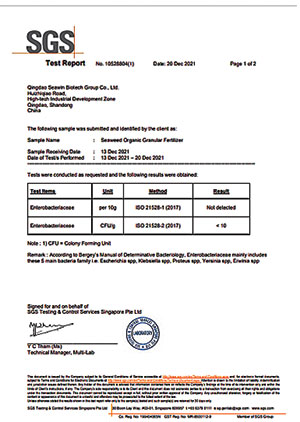
SGS test report Figure 1
shows an image of the test report released by the SGS laboratory on the 20 December 2021. According to the report, the submitted sample was tested by two standard methods, namely ISO 21528-1 (2017) and ISO 21528-2 (2017), to detect bacteria belonging to the Family Enterobacteriaceae, a sub-group within the large taxonomic group of bacteria.
The testing period of the sample has been reported as seven days from the 13th to the 20 December 2021. Results released by the SGS laboratory reveal that bacteria belonging to Enterobacteriaceae have not been detected in the sample subjected to the above two testing procedures.
(see Figure 1: The SGS test report)
What are Enterobacteriaceae bacteria?
Enterobacteriaceae is a large family of bacteria consisting of 53 bacterial genera (Reference No. 1). According to ‘Gram Staining’, the standard staining technique used in bacteriology for initial categorisation of bacteria, the bacteria belonging to this Enterobacteriaceae are classified as ‘Gram negative’. A majority of the bacterial genera belonging to this family are inhabitants of the human and animal intestine. Such bacteria are termed as ‘enteric bacteria’. In addition to the enteric bacteria, some of the genera belonging to the family Enterobacteriaceae live in natural environments such as soil and water.
There are some bacterial genera of this family, which are pathogenic (i.e. having the ability to cause diseases) to plants and animals. Most of the bacterial members of this family grow well at a temperature of 37 oC but there are some bacteria that show a better growth at a temperature range of 25 – 30 oC. Therefore, it is clear that within the same bacterial family, there are different bacterial genera and species with different physical, nutritional and functional characteristics. It is equivalent to siblings of a given family having differences in terms of their external morphological features, behaviour, attitudes, performances, working efficiency, etc.
Scientific basis of the test protocol to determine the quality of the sample
ISO 21528-1 (2017) and ISO 21528-2 (2017) are recommended test protocols to detect the presence of bacteria belonging to the Family Enterobacteriaceae in food samples used for human/animal consumption or to test the environmental samples used for primary food production, food production and food handling. Using the above test protocols it is possible to detect the presence of ‘culturable bacteria’ (i.e. bacteria which are capable of growing on synthetic culture media) belonging to the family Enterobacteriaceae. This means that the selected test protocols are suitable for detecting only a limited, focused group of bacteria and that these specific test protocols have not targeted the detection of all types of bacteria. The specificity of this test protocol to target only the culturable type bacteria of the Enterobacteriaceae family has been achieved through the specific synthetic culture medium used in the protocol. The culture medium used here is called the ‘Violet Red Bile Glucose Agar medium (VRBGA)’. Microbiologically, the culture media which specifically target a particular group of bacteria or microorganisms are termed ‘selective media’. Such selective media favour the growth of a particular group of microorganisms while suppressing the growth of all other types.
Selectivity of the VRBGA medium is determined by the ingredients used when preparing it. For example, the chemical stain called crystal violet and bile salts are used when preparing the VRBGA medium and both these chemical ingredients suppress the growth of Gram positive type bacteria. Moreover, the bile salts used in this medium encourages the growth of bacteria that are resistant to bile salts. In other words, only the bacteria which are not destroyed by the action of bile salts will grow on the VRBGA medium.
On the other hand, the bacteria which cannot tolerate bile salts will not grow on this selective medium even if they are present in the test sample.
Enteric bacteria naturally inhabit in an environment containing bile salts (i.e. the gut of animals and humans) and consequently are usually resistant to bile salts. Therefore, growth of such bacteria will not be suppressed when a test sample is allowed to grow on the VRBGA medium. However, non-enteric bacteria usually live in environments such as soil or plant tissue, and therefore, have no exposure to bile salts. Accordingly, they are not accustomed to grow in an environment containing bile salts. As a consequence, the growth of non-enteric bacteria is suppressed on the VRBGA medium. Therefore, it is clear that a test protocol using the VRBGA medium is not appropriate to test the presence of microorganisms or bacteria in a test sample of plant origin such as the organic fertilizer consignment from Qingdao Seawin Biotech Group Co. Ltd. More importantly, this renders the conclusion by the SGS test report invalid.
Erwinia spp. grow naturally in plant tissues which have no bile salts in them. Thus it is a group of non-enteric bacteria. As explained above, the growth of such non-enteric bacteria is heavily suppressed on the VRBGA medium. According to the results of the publication given as Reference Number 2, the VRBGA medium has been identified as a medium which underestimates the presence of plant bacteria such as Erwinia, despite Erwinia being a member of the Family Enterobacteriaceae. Therefore, it should be clear that even if bacteria belonging to Erwinia spp. had been present in the tested organic fertilizer sample from Qingdao, there was a very high probability for them not being able to develop colonies on the VRBGA medium. Thus, the conclusion that the sample is free from Erwinia is erroneous and inconclusive.
Scientific reasons for not agreeing with the conclusions made by the SGS report
The SGS report concludes that based on ISO 21528-1 (2017) and ISO 21528-2 (2017) test protocols, the sample does not contain bacteria belonging to the family Enterobacteriaceae, and therefore, the sample is free from Erwinia as well. Based on the above test report, news reports were released through public media (Daily News, 24th of December 2021 and News First, 22nd of December 2021) saying that the organic fertiliser shipment was free from plant, animal and human pathogens including Erwinia.
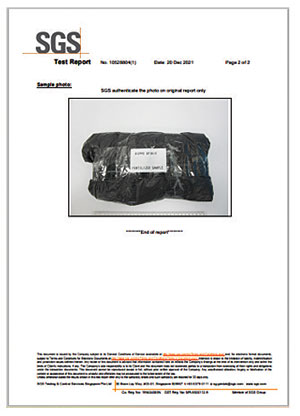
Given below are the scientific reasons to emphasise that the conclusion drawn is erroneous:
(a) Because of the highly selective nature of the VRBGA medium, all bacteria in the Enterobacteriaceae family will not develop colonies on it when the sample is tested by the above ISO procedures. Accordingly, Non-enteric bacteria and bacteria which are usual inhabitants of bile salt-free environments, and hence are not resistant to the effect of bile salts will not develop on the culture medium even if they are present in the test sample. Therefore, it is erroneous to conclude that the sample is free from Erwinia;
(b)
As a selective medium, VRBGA targets the detection of bacteria belonging to the Enterobacteriaceae family only. This medium suppresses the growth of all Gram positive type bacteria and other non-Enterobacteriaceae bacteria. There are many plant, animal and human pathogenic bacteria which belong to many other taxonomic families (i.e. other than Enterobacteriaceae/non-Enterobacteriaceae). Therefore, based on this test report, it is not possible to conclude that the sample is free from plant, animal and human pathogens from taxonomic families other than Enterobacteriaceae;
(c)
In giving their conclusion, the SGS report assumes that Erwinia belongs to the family Entereobacteriaceae. However, according to the most recent taxonomic classification of bacteria as given in Reference No. 3, the genus Erwinia is no longer a member of the Family Enterobacteriaceae. Accordingly, Erwinia genus is now included in a separate family named Erwiniaceae. This recent taxonomic classification is based on molecular biological methods of bacteria identification. In contrast, the previous classification, under which the genus Erwinia had been classified within the Family Enterobacteriaceae, was based on morphological and biochemical features of bacteria. It is widely acknowledged that molecular biological methods of bacteria identification are superior to methods based on morphological and biochemical features. This is equivalent to identifying a person by his/her genetic make-up as opposed to his/her external features and performance.
Organisms/microorganisms belonging to different taxonomic strata have unique behaviours and unique characteristics. These specific behaviours and features should be considered carefully when selecting appropriate methods for detecting microorganisms. Inappropriate selection of detection methodology leaves a very high possibility for a majority of microorganisms passing undetected, leading to erroneous conclusions about test samples.
If the fertiliser supplying company had the intention of clearing its good name that the shipment was free from Erwinia, the most appropriate methodology was to use specific, standard microbiological methods that are available to specifically detect the genus Erwinia or selected species of Erwinia. Or, the most logical and scientific approach should have been to test the sample for the presence of any culturable microorganism (using a standard microbiological technique suitable for this purpose) and if microorganisms were detected, to confirm their identity for genus Erwinia or species of Erwinia, subsequently. Instead what has been attempted through the test procedures that have been adopted by the SGS laboratory in Singapore was to try to convince the absence of Erwinia in an indirect way using a less sensitive and highly selective method targeting a particular group of bacteria with a questionable approach.
According to ISO 21528-1 (2017) and ISO 21528-2 (2017) test procedures, there is no specific guideline on the way of sampling. It is stated that the sampling is done on a case-specific way (if standard procedures are available for a given sampling material) and when such standards are not available, it is done via mutual agreement of the relevant parties.
According to the SGS report, the sample submitted for testing (Figure 2) is a parcel with approximate dimensions of 30 cm x 15 cm. The content within it could be estimated to be about 500 – 1000 g. It is highly questionable whether the amount of fertiliser sample submitted for testing was truly representative of the whole bulk of the 20,000 metric ton shipment. Furthermore, the number of samples submitted for testing seems to be only one, which is also not a sufficient number to represent the bulk of the shipment. There are widely-accepted sampling protocols that should have been used to obtain a series of representative samples. In scientific research, results based on a single sample are rarely, if ever, accepted as valid.
(See Figure 2: The sample used for testing as shown in the SGS test report)
ISO 21528-1 (2017) and ISO 21528-2 (2017) test procedures emphasise that the samples used for testing should be a proper representation of the bulk. In addition they provide clear guidelines on the quality of the sample at the time of its submission for testing. Accordingly, the sample should not have been damaged or changed during transport and storage. It is highly doubtful if the latter requirement could have been fulfilled from a shipment that had been stored in a bulk carrier for more than three months. Therefore, the validity/accuracy of the test results is questionable as the results do not reflect the initial quality/status of the shipment.
Based on above questionable/doubtful test procedures, it is not possible to conclude that the organic fertiliser sample tested by the SGS laboratory is free from plant, animal and human pathogens including Erwinia. The biggest concern arising from the conclusions of this nature is their negative impact on policy decisions and thereby the potential catastrophes that could be encountered by the nation as a whole. For example, the potential disease damage to a wide range of crops grown in Sri Lanka that could be caused by application of an organic fertiliser containing a plant pathogen such as Erwinia is enormous and could last for a very long period, incurring billions of rupees. Similarly, diseases to plants, animals and humans that could be caused by the wide range of microorganisms that are not detected by these highly-selective test protocols adopted by the SGS could lead to substantial economic and environmental damage along with human health hazards. These could take several years and several billions of rupees to be brought under control.
The meek response of the Sri Lankan authorities to the legal challenge of Qingdao based on the erroneous and questionable SGS test report from Singapore demonstrates their readiness to accept anything coming from an international agency while ignoring the scientifically-valid tests and conclusions of the Sri Lankan scientists. This sends a very negative detrimental signal to the national scientific community and to the nation as a whole.
References:
1. UK Standards for Microbiology Investigations: Identification of Enterobacteriaceae (2013), Issued by the Standards Unit, Microbiology Services, Public Health England, 32 pp.
2. Baruzzi, F., Cefola, M., Carito, A., Vanadia, S. and Calabrese, N., (2012). Changes in bacterial composition of zucchini flowers exposed to refrigeration temperatures. The Scientific World Journal, https://doi.org/10.1100/2012/127805, 6 pp.
3. Adeolu, M., Alnajar, S., Naushad, S. and Gupta, R.S., (2016). Genome-based phylogeny and taxonomy of the ‘Enterobacteriales’: proposal for Enterobacterales ord. nov. divided into the families Enterobacteriaceae, Erwiniaceae fam. nov., Pectobacteriaceae fam. nov., Yersiniaceae fam. nov., Hafniaceae fam. nov., Morganellaceae fam. nov., and Budviciaceae fam. nov. International Journal of Systematic and Evolutionary Microbiology, 66(12), 5575-5599.
Features
US-CHINA RIVALRY: Maintaining Sri Lanka’s autonomy

During a discussion at the Regional Center for Strategic Studies (RCSS) in Sri Lanka on 9 December, Dr. Neil DeVotta, Professor at Wake Forest University, North Carolina, USA commented on the “gravity of a geopolitical contest that has already reshaped global politics and will continue to mould the future. For Sri Lanka – positioned at the heart of the Indian Ocean, economically fragile, and diplomatically exposed- his analysis was neither distant nor abstract. It was a warning of the world taking shape around us” (Ceylon Today, December 14, 2025).
Sri Lanka is known for ignoring warnings as it did with the recent cyclone or security lapses in the past that resulted in terrorist attacks. Professor De Votta’s warning too would most likely be ignored considering the unshakable adherence to Non-Alignment held by past and present experts who have walked the halls of the Foreign Ministry, notwithstanding the global reshaping taking place around us almost daily. In contrast, Professor DeVotta “argued that nonalignment is largely a historical notion. Few countries today are truly non-aligned. Most States claiming neutrality are in practice economically or militarily dependent on one of the great powers. Sri Lanka provides a clear example while it pursues the rhetoric of non-alignment, its reliance on Chinese investments for infrastructure projects has effectively been aligned to Beijing. Non-alignment today is more about perceptions than reality. He stressed that smaller nations must carefully manage perceptions while negotiating real strategic dependencies to maintain flexibility in an increasingly polarised world.” (Ibid).
The latest twist to non-alignment is Balancing. Advocates of such policies are under the delusion that the parties who are being “Balanced” are not perceptive enough to realise that what is going on in reality is that they are being used. Furthermore, if as Professor DeVotta says, it is “more about perception than reality”, would not Balancing strain friendly relationships by its hypocrisy? Instead, the hope for a country like Sri Lanka whose significance of its Strategic Location outweighs its size and uniqueness, is to demonstrate by its acts and deeds that Sri Lanka is perceived globally as being Neutral without partiality to any major powers if it is to maintain its autonomy and ensure its security.
DECLARATION OF NEUTRALITY AS A POLICY
Neutrality as a Foreign Policy was first publicly announced by President Gotabaya Rajapaksa during his acceptance speech in the holy city of Anuradhapura and later during his inauguration of the 8th Parliament on January 3, 2020. Since then Sri Lanka’s Political Establishment has accepted Neutrality as its Foreign Policy judging from statements made by former President Ranil Wickremesinghe, Prime Minister Dinesh Gunawardena and Foreign Ministers up to the present when President Dissanayake declared during his maiden speech at the UN General Assembly and captured by the Head Line of Daily Mirror of October 1, 2025: “AKD’s neutral, not nonaligned, stance at UNGA”
The front page of the Daily FT (Oct.9, 2024) carries a report titled “Sri Lanka reaffirms neutral diplomacy” The report states: “The Cabinet Spokesman and Foreign Minister Vijitha Herath yesterday assured that Sri Lanka maintains balanced diplomatic relations with all countries, reaffirming its policy of friends of all and enemy of none”. Quoting the Foreign Minister, the report states: “There is no favouritism. We do not consider any country to be special. Whether it is big or small, Sri Lanka maintains diplomatic relations with all countries – China, India, the US, Russia, Cuba, or Vietnam. We have no bias in our approach, he said…”
NEUTRALITY in OPERATION
“Those who are unaware of the full scope and dynamics of the Foreign Policy of Neutrality perceive it as being too weak and lacking in substance to serve the interests of Sri Lanka. In contrast, those who are ardent advocates of Non-Alignment do not realize that its concepts are a collection of principles formulated and adopted only by a group of like-minded States to meet perceived challenges in the context of a bi-polar world. In the absence of such a world order the principles formulated have lost their relevance” (https://island.lk/relevance-of-a neutral-foreign-policy).
“On the other hand, ICRC Publication on Neutrality is recognized Internationally “The sources of the international law of neutrality are customary international law and, for certain questions, international treaties, in particular the Paris Declaration of 1856, the 1907 Hague Convention No. V respecting the Rights and Duties of Neutral Powers and Persons in Case of War on Land, the 1907 Hague Convention No. XIII concerning the Rights and Duties of Neutral Powers in Naval War, the four 1949 Geneva Conventions and Additional Protocol I of 1977 (June 2022)” (Ibid).
“A few Key issues addressed in this Publication are: “THE PRINCIPLE OF INVOILABILITY of a Neutral State and THE DUTIES OF NEUTRAL STATES.
“In the process of reaffirming the concept of Neutrality, Foreign Minister Vijitha Herath stated that the Policy of Neutrality would operate in practice in the following manner: “There is no favoritism. We do not consider any country to be special. Whether it is big or small, Sri Lanka maintains diplomatic relations with all countries – China, India, the US, Russia, Cuba or Vietnam. We have no bias in our approach” (The Daily FT, Oct, 9, 2024).
“Essential features of Neutrality, such as inviolability of territory and to be free of the hegemony of power blocks were conveyed by former Foreign Minister Ali Sabry at a forum in Singapore when he stated: “We have always been clear that we are not interested in being an ally of any of these camps. We will be an independent country and work with everyone, but there are conditions. Our land and sea will not be used to threaten anyone else’s security concerns. We will not allow military bases to be built here. We will not be a pawn in their game. We do not want geopolitical games playing out in our neighbourhood, and affecting us. We are very interested in de-escalating tensions. What we could do is have strategic autonomy, negotiate with everyone as sovereign equals, strategically use completion to our advantage” (the daily morning, July 17, 2024)
In addition to the concepts and expectations of a Neutral State cited above, “the Principle of Inviolability of territory and formal position taken by a State as an integral part of ‘Principles and Duties of a Neutral State’ which is not participating in an armed conflict or which does not want to become involved” enabled Sri Lanka not to get involved in the recent Military exchanges between India and Pakistan.
However, there is a strong possibility for the US–China Rivalry to manifest itself engulfing India as well regarding resources in Sri Lanka’s Exclusive Economic Zone. While China has already made attempts to conduct research activities in and around Sri Lanka, objections raised by India have caused Sri Lanka to adopt measures to curtail Chinese activities presumably for the present. The report that the US and India are interested in conducting hydrographic surveys is bound to revive Chinese interests. In the light of such developments it is best that Sri Lanka conveys well in advance that its Policy of Neutrality requires Sri Lanka to prevent Exploration or Exploitation within its Exclusive Economic Zone under the principle of the Inviolability of territory by any country.
Another sphere where Sri Lanka’s Policy of Neutrality would be compromised is associated with Infrastructure Development. Such developments are invariably associated with unsolicited offers such as the reported $3.5 Billion offer for a 200,000 Barrels a day Refinery at Hambantota. Such a Project would fortify its presence at Hambantota as part of its Belt and Road Initiative. Such offers if entertained would prompt other Global Powers to submit similar proposals for other locations. Permitting such developments on grounds of “Balancing” would encourage rivalry and seriously threaten Sri Lanka’s independence to exercise its autonomy over its national interests.
What Sri Lanka should explore instead, is to adopt a fresh approach to develop the Infrastructure it needs. This is to first identify the Infrastructure projects it needs, then formulate its broad scope and then call for Expressions of Interest globally and Finance it with Part of the Remittances that Sri Lanka receives annually from its own citizens. In fact, considering the unabated debt that Sri Lanka is in, it is time that Sri Lanka sets up a Development Fund specifically to implement Infrastructure Projects by syphoning part of the Foreign Remittances it receives annually from its citizens . Such an approach means that it would enable Sri Lanka to exercise its autonomy free of debt.
CONCLUSION
The adherents of Non-Alignment as Sri Lanka’s Foreign Policy would not have been pleased to hear Dr. DeVotta argue that “non-alignment is largely a historical notion” during his presentation at the Regional Center for Strategic Studies in Colombo. What is encouraging though is that, despite such “historical notions”, the political establishment, starting with President Gotabaya Rajapaksa and other Presidents, Prime Ministers and Ministers of Foreign Affairs extending up to President AKD at the UNGA and Foreign Affairs Minister, Vijitha Herath, have accepted and endorsed neutrality as its foreign policy. However, this lack of congruence between the experts, some of whom are associated with Government institutions, and the Political Establishment, is detrimental to Sri Lanka’s interests.
If as Professor DeVotta warns, the future Global Order would be fashioned by US – China Rivalry, Sri Lanka has to prepare itself if it is not to become a victim of this escalating Rivalry. Since this Rivalry would engulf India a well when it comes to Sri Lanka’s Exclusive Economic Zone (EEC), Sri Lanka should declare well in advance that no Exploration or Exploitation would be permitted within its EEC on the principle of inviolability of territory under provisions of Neutrality and the UN adoption of the Indian Ocean as a Zone of Peace.
As a measure of preparedness serious consideration should be given to the recommendation cited above which is to set up a development fund by allocating part of the annual dollar remittances to finance Sri Lanka’s development without depending on foreign direct investments, export-driven strategies or the need to be flexible to negotiate dependencies; A strategy that is in keeping with Sri Lanka’s civilisational values of self-reliance. Judging from the unprecedented devastation recently experienced by Sri Lanka due to lack of preparedness and unheeded warnings, the lesson for the political establishment is to rely on the wisdom and relevance of Self-Reliance to equip Sri Lanka to face the consequences of the US–China rivalry.
by Neville Ladduwahetty ✍️
Features
1132nd RO Water purification plant opened at Mahinda MV, Kauduluwewa

A project sponsored by Perera and Sons (P&S) Company and built by Sri Lanka Navy
Petroleum Terminals Ltd
Former Managing Director Ceylon Petroleum Corporation
Former High Commissioner to Pakistan
When the 1132nd RO plant built by the Navy with funds generously provided by M/S Perera and Sons, Sri Lanka’s iconic, century-old bakery and food service chain, established in 1902, known for its network of outlets, numbering 235, in Sri Lanka. This company, established in 1902 by Philanthropist K. A. Charles Perera, well known for their efforts to help the needy and humble people. Helping people gain access to drinking water is a project launched with the help of this esteemed company.
The Chronic Kidney Disease (CKD) started spreading like a wildfire mainly in North Central, North Western and Eastern provinces. Medical experts are of the view that the main cause of the disease is the use of unsafe water for drinking and cooking. The map shows how the CKD is spreading in Sri Lanka.
In 2015, when I was the Commander of the Navy, with our Research and Development Unit of SLN led by a brilliant Marine Engineer who with his expertise and innovative skills brought LTTE Sea Tigers Wing to their knees. The famous remote-controlled explosive-laden Arrow boats to fight LTTE SEA TIGER SUCIDE BOATS menace was his innovation!). Then Captain MCP Dissanayake (2015), came up with the idea of manufacturing low- cost Reverse Osmosis Water Purification Plants. The SLN Research and development team manufactured those plants at a cost of one-tenth of an imported plant.

Gaurawa Sasthrawedi Panditha Venerable Devahuwe Wimaladhamma TheroP/Saraswathi Devi Primary School, Ashokarama Maha Viharaya, Navanagara, Medirigiriya
The Navy established FIRST such plant at Kadawatha-Rambawa in Madawachiya Divisional Secretariat area, where the CKD patients were the highest. The Plant was opened on 09 December 2015, on the 65th Anniversary of SLN. It was an extremely proud achievement by SLN
First, the plants were sponsored by officers and sailors of the Sri Lanka Navy, from a Social Responsibility Fund established, with officers and sailors contributing Rs 30 each from their salaries every month. This money Rs 30 X 50,000 Naval personnel provided us sufficient funds to build one plant every month.
Observing great work done by SLN, then President Maithripala Sirisena established a Presidential Task Force on eradicating CKD and funding was no issue to the SLN. We developed a factory line at our R and D unit at Welisara and established RO plants at double-quick time. Various companies/ organisations and individuals also funded the project. Project has been on for the last ten years under six Navy Commanders after me, namely Admiral Travis Sinniah, Admiral Sirimevan Ranasinghe, Admiral Piyal de Silva, Admiral Nishantha Ulugetenna, Admiral Priyantha Perera and present Navy Commander Vice Admiral Kanchana Banagoda.
Each plant is capable of producing up to 10,000 litres of clean drinking water a day. This means a staggering 11.32 million litres of clean drinking water every day!
The map indicates the locations of these 1132 plants.
Well done, Navy!
On the occasion of its 75th Anniversary celebrations, which fell on 09 December 2025, the Navy received the biggest honour. Venerable Thero (Venerable Dewahuwe Wimalarathana Thero, Principal of Saraswathi Devi Primary Pirivena in Medirigiriya) who delivered the sermons during opening of 1132nd RO plant, said, “Ten years ago, out of 100 funerals I attended; more than 80 were of those who died of CKD! Today, thanks to the RO plants established by the Navy, including one at my temple also, hardly any death happens in our village due to CKD! Could there be a greater honour?
Features
Poltergeist of Universities Act

 The Universities Act is back in the news – this time with the present government’s attempt to reform it through a proposed amendment (November 2025) presented by the Minister of Education, Higher Education and Vocational Education, Harini Amarasuriya, who herself is a former academic and trade unionist. The first reading of the proposed amendment has already taken place with little debate and without much attention either from the public or the university community. By all counts, the parliament and powers across political divisions seem nonchalant about the relative silence in which this amendment is making its way through the process, indicative of how low higher education has fallen among its stakeholders.
The Universities Act is back in the news – this time with the present government’s attempt to reform it through a proposed amendment (November 2025) presented by the Minister of Education, Higher Education and Vocational Education, Harini Amarasuriya, who herself is a former academic and trade unionist. The first reading of the proposed amendment has already taken place with little debate and without much attention either from the public or the university community. By all counts, the parliament and powers across political divisions seem nonchalant about the relative silence in which this amendment is making its way through the process, indicative of how low higher education has fallen among its stakeholders.
The Universities Act No. 16 of 1978 under which Sri Lankan universities are managed has generated debate, though not always loud, ever since its empowerment. Increasing politicisation of decision making in and about universities due to the deterioration of the conduct of the University Grants Commission (UGC) has been a central concern of those within the university system and without. This politicisation has been particularly acute in recent decades either as a direct result of some of the provisions in the Universities Act or the problematic interpretation of these. There has never been any doubt that the Act needs serious reform – if not a complete overhaul – to make universities more open, reflective, and productive spaces while also becoming the conscience of the nation rather than timid wastelands typified by the state of some universities and some programs.
But given the Minister’s background in what is often called progressive politics in Sri Lanka, why are many colleagues in the university system, including her own former colleagues and friends, so agitated by the present proposed amendment? The anxiety expressed by academics stem from two sources. The first concern is the presentation of the proposed amendment to parliament with no prior consultative process with academics or representative bodies on its content, and the possible urgency with which it will get pushed through parliament (if a second reading takes place as per the regular procedure) in the midst of a national crisis. The second is the content itself.
Appointment of Deans
Let me take the second point first. When it comes to the selection of deans, the existing Act states that a dean will be selected from among a faculty’s own who are heads of department. The provision was crafted this way based on the logic that a serving head of department would have administrative experience and connections that would help run a faculty in an efficient manner. Irrespective of how this worked in practice, the idea behind has merit.
By contrast, the proposed amendment suggests that a dean will be elected by the faculty from among its senior professors, professors, associate professors and senior lecturers (Grade I). In other words, a person no longer needs to be a head of department to be considered for election as a dean. While in a sense, this marks a more democratised approach to the selection, it also allows people lacking in experience to be elected by manoeuvring the electoral process within faculties.
In the existing Act, this appointment is made by the vice chancellor once a dean is elected by a given faculty. In the proposed amendment, this responsibility will shift to the university’s governing council. In the existing Act, if a dean is indisposed for a number of reasons, the vice chancellor can appoint an existing head of department to act for the necessary period of time, following on the logic outlined earlier. The new amendment would empower the vice chancellor to appoint another senior professor, professor, associate professor or senior lecturer (Grade I) from the concerned faculty in an acting capacity. Again, this appears to be a positive development.
Appointing Heads of Department
Under the current Act heads of department have been appointed from among professors, associate professors, senior lecturers or lecturers appointed by the Council upon the recommendation of the vice chancellor. The proposed amendment states the head of department should be a senior professor appointed by the Council upon the recommendation of the vice chancellor, and in the absence of a senior professor, other members of the department are to be considered. In the proposed scheme, a head of department can be removed by the Council. According to the existing Act, an acting head of department appointment can be made by the vice chancellor, while the proposed amendment shifts this responsibility to the Council, based upon the recommendation of the vice chancellor.
The amendment further states that no person should be appointed as the head of the same department for more than one term unless all other eligible people have already completed their responsibilities as heads of department. This is actually a positive development given that some individuals have managed to hang on to the head of department post for years, thereby depriving opportunities to other competent colleagues to serve in the post.
Process of amending the Universities Act
The question is, if some of the contents of the proposed amendment are positive developments, as they appear to be, why are academics anxious about its passing in parliament? This brings me to my first point, that is the way in which this amendment is being rushed through by the government. This has been clearly articulated by the Arts Faculty Teachers Association of University of Colombo. In a letter to the Minister of Education dated 9 December 2025, the Association makes two points, which have merit. First, “the bill has been drafted and tabled in Parliament for first reading without a consultative process with academics in state universities, who are this bill’s main stakeholders. We note that while the academic community may agree with its contents, the process is flawed because it is undemocratic and not transparent. There has not been adequate time for deliberation and discussion of details that may make the amendment stronger, especially in the face of the disaster situation of the country.”
Second, “AFTA’s membership also questions the urgency with which the bill is tabled in Parliament, and the subsequent unethical conduct of the UGC in requesting the postponement of dean selections and heads of department appointments in state universities in expectation of the bill’s passing in Parliament.”
These are serious concerns. No one would question the fact that the Universities Act needs to be amended. However, this must necessarily be based on a comprehensive review process. The haste to change only sections pertaining to the selection of deans and heads of department is strange, to say the least, and that too in the midst of dealing with the worst natural calamity the country has faced in living memory. To compound matters, the process also has been fast-tracked thereby compromising on the time made available to academics to make their views be known.
Similarly, the issuing of a letter by the UGC freezing all appointments of deans and heads of department, even though elections and other formalities have been carried out, is a telling instance of the government’s problematic haste and patently undemocratic process. Notably, this action comes from a government whose members, including the Education Minister herself, have stood steadfastly for sensible university reforms, before coming to power. The present process is manoeuvred in such a manner, that the proposed amendment would soon become law in the way the government requires, including all future appointments being made under this new law. Hence, the attempt to halt appointments, which were already in the pipeline, in the interim period.
It is evident that rather than undertake serious university sector reforms, the government is aiming to control universities and thereby their further politicization amenable to the present dispensation. The ostensible democratis0…..ation of the qualified pool of applicants for deanships opens up the possibilities for people lacking experience, but are proximate to the present powers that be, to hold influential positions within the university. The transfer of appointing powers to the Councils indicates the same trend. After all, Councils are partly made up of outsiders to the university, and such individuals, without exception, are political appointees. The likelihood of them adhering to the interests of the government would be very similar to the manner in which some vice chancellors appointed by the President of the country feel obligated to act.
All things considered, particularly the rushed and non-transparent process adopted thus far by the government does not show sincerity towards genuine and much needed university sector reforms. By contrast, it shows a crude intent to control universities at any cost. It is extremely regrettable that the universities in general have not taken a more proactive and principled position towards the content and the process of the proposed amendment. As I have said many times before, whatever ills that have befallen universities so far is the disastrous fallout of compromises of those within made for personal gain and greed, or the abject silence and disinterest of those within. These culprits have abandoned broader institutional development. This appears to be yet another instance of that sad process.
In this context, I have admiration for my former colleagues in the Faculty of Arts at the University of Colombo for having the ethical courage to indicate clearly the fault lines of the proposed amendment and the problems of its process. What they have asked is a postponement of the process giving them time to engage. In this context, it is indeed disappointing to see the needlessly conciliatory tone of the letter to the Education Minister by the Federation of University Teachers Association dated December 5, 2025, which sends the wrong signal.
If this government still believes it is a people’s government, the least it can do is give these academics time to engage with the proposed amendment. After all, many within the academic community helped bring the government to power. If not and if this amendment is rushed through parliament in needless haste, it will create a precedent that signals the way in which the government intends to do business in the future, abusing its parliamentary majority and denting its credibility for good.
-

 Features6 days ago
Features6 days agoWhy Sri Lanka Still Has No Doppler Radar – and Who Should Be Held Accountable
-

 Midweek Review3 days ago
Midweek Review3 days agoHow massive Akuregoda defence complex was built with proceeds from sale of Galle Face land to Shangri-La
-

 News2 days ago
News2 days agoPakistan hands over 200 tonnes of humanitarian aid to Lanka
-
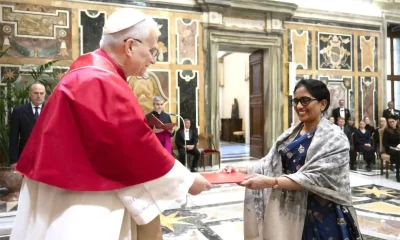
 News2 days ago
News2 days agoPope fires broadside: ‘The Holy See won’t be a silent bystander to the grave disparities, injustices, and fundamental human rights violations’
-

 Latest News5 days ago
Latest News5 days agoLandslide early warnings in force in the Districts of Badulla, Kandy, Kegalle, Kurunegala, Matale, Nuwara Eliya and Ratnapura
-
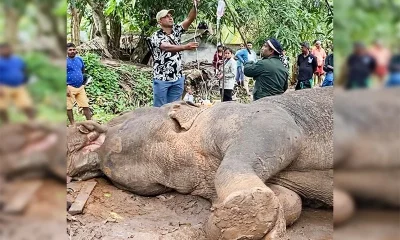
 News3 days ago
News3 days agoBurnt elephant dies after delayed rescue; activists demand arrests
-
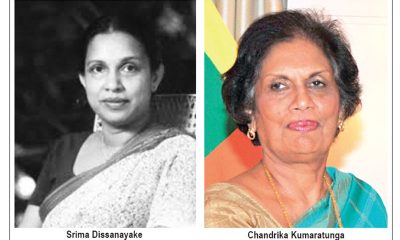
 Features6 days ago
Features6 days agoSrima Dissanayake runs for president and I get sidelined in the UNP
-

 News7 days ago
News7 days agoGovt. okays postgraduate medical training for Maldivian medical officers and dental surgeons






